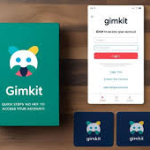Planning an event is like telling a story-you want every detail to flow seamlessly, from the décor to the food and even the music. But there’s one often-overlooked detail that can make or break your event’s first impression: the invitation. Think of your invitation as a sneak peek into what’s to come. It sets the tone, builds anticipation, and gives guests a taste of the experience you’ve been carefully crafting.
Whether you’re organizing a wedding, corporate gala, birthday bash, or nonprofit fundraiser, your invitations are more than just pieces of paper-they’re a crucial part of your event branding. And with tools like custom printing invitations, it’s easier than ever to ensure your invites reflect the same thought and creativity you’re putting into every other element of your event.
In this article, we’ll explore how to align your invitations with your overall event theme, offer actionable tips, and back it all up with design trends and data-driven insights.
Why Invitations Matter More Than You Think
It’s tempting to view invitations as a formality, but they play a much larger role:
- First Impressions Count: Studies show it takes just 7 seconds for people to form an opinion. Your invite is your first chance to “wow” your guests.
- Sets Expectations: From black-tie elegance to backyard casual, your invitation instantly communicates the event’s vibe.
- Reinforces Branding: For corporate events or fundraisers, consistent branding builds trust and strengthens recognition.
According to Statista, the global events industry is projected to reach $2.1 trillion by 2032. With that much investment, it’s clear that details like invitations aren’t just fluff-they’re strategy.
Step 1: Define Your Event Theme Clearly
Before diving into fonts, colors, and paper textures, you need to be crystal clear about your event’s theme. Ask yourself:
- Is this a formal or casual gathering?
- Do you want a modern, rustic, vintage, or minimalist aesthetic?
- What’s the main emotion you want guests to feel-excitement, elegance, fun, exclusivity?
For example:
- A beach wedding might use light blues, sandy beige tones, and seashell motifs.
- A tech conference could lean on sleek, minimalist fonts with bold digital-inspired icons.
- A holiday fundraiser might use deep reds, gold accents, and festive illustrations.
Your invitation is the canvas where these choices start coming alive.
Step 2: Match Design Elements to Your Theme
Once you’ve nailed down the theme, it’s time to make sure your invitation reflects it. Here’s how:
1. Color Palette Consistency
Your invitations should mirror the colors that will appear in your décor, signage, and even table settings. According to Pantone, 65% of consumers associate brands with colors first before logos or words. So, if your event leans on emerald green and champagne gold, don’t send out invites in neon pink.
2. Typography that Tells a Story
Fonts can carry personality. Script fonts scream romance and elegance, while sans-serifs feel clean and modern. Make sure your typography matches your event’s overall voice.
3. Imagery and Motifs
Adding symbols, patterns, or illustrations that tie into your theme strengthens cohesion. For a garden party, you might use floral graphics. For a corporate product launch, geometric patterns might feel more on-brand.
Step 3: Choose the Right Format
Invitations aren’t limited to cardstock anymore. Today’s hosts can get creative with:
- Traditional Paper Invites: Classic and timeless, especially for weddings and formal events.
- Digital Invitations: Eco-friendly and cost-effective, perfect for casual gatherings.
- Hybrid Approaches: Send digital “save the dates” and follow up with printed invitations for added impact.
Pro tip: A study by the Knot found that nearly 75% of couples still prefer printed invitations, as they feel more personal and memorable.
Step 4: Incorporate Wording that Reflects the Theme
It’s not just how the invitation looks-it’s also what it says. Your language should match your event’s tone.
- Formal event: “You are cordially invited to…”
- Casual party: “Join us for a night of fun and laughter…”
- Corporate launch: “Be the first to experience…”
The copy should balance clarity (date, time, location, RSVP) with personality.
Step 5: Don’t Forget the Envelope
The envelope is the very first thing guests see, so don’t let it be an afterthought. Coordinating envelope liners, wax seals, or foil stamping can elevate the entire presentation. If your event is high-end, guests will notice these details.
Step 6: Work with Professionals When Needed
DIY invitations can be fun, but for events where brand identity or guest impressions matter, professional designers or printers can save time and deliver quality. Look for providers who specialize in event stationery and can offer custom touches like embossing, letterpress, or foil.
Actionable Tips to Nail the Perfect Event Invitation
- Create a Mood Board: Pull together images of décor, outfits, color swatches, and fonts. Use this as a visual guide when designing your invite.
- Think About Timing: Send invitations early enough to build anticipation-usually 6–8 weeks before weddings and 2–4 weeks before smaller events.
- Prioritize Readability: Don’t sacrifice clarity for aesthetics. Key details (date, time, venue, RSVP instructions) should stand out.
- Test Before Printing: Print one copy first to check colors, alignment, and paper quality.
- Add Personal Touches: Handwritten notes, personalized RSVP cards, or custom illustrations add warmth and individuality.
Common Mistakes to Avoid
- Overloading with Information: Keep the invite clean; too much text can overwhelm.
- Ignoring Accessibility: Use legible fonts and ensure good contrast for readability.
- Mismatched Aesthetic: Don’t let your invitation style clash with the actual event décor-it creates confusion.
- Leaving Out RSVP Details: Guests need a clear way to respond-make it as easy as possible.
Real-World Example: A Corporate Gala
Imagine a tech company hosting a black-tie gala to celebrate a new product launch. The event features sleek, futuristic décor with LED lighting and monochrome tablescapes.
The invitations?
- Black matte cardstock with silver foil lettering.
- Minimalist typography to reflect innovation.
- A QR code RSVP linking to a digital platform for efficiency.
Result: Guests arrive already aligned with the event’s tone-elegant, futuristic, and polished.
Final Thoughts
Invitations aren’t just functional-they’re storytelling tools. When integrated seamlessly with your event theme, they heighten anticipation, set expectations, and strengthen your brand or personal style.
By defining your theme clearly, aligning design choices, choosing the right format, and paying attention to both wording and details, you can create invitations that feel like an extension of the event itself. And whether you go digital, traditional, or somewhere in between, remember: your invitation is the first chapter of your event’s story.
So, take the time to get it right-because your guests will notice.










